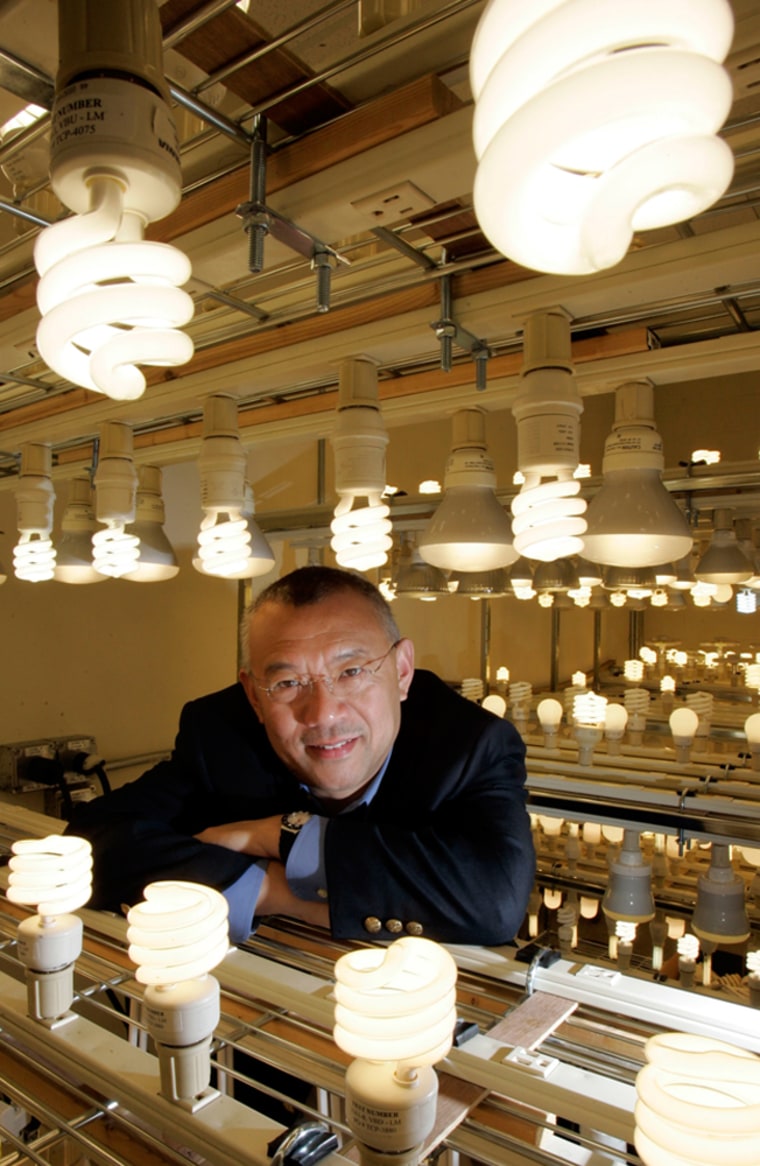How many people does it take to change a light bulb? In California, the answer could be a majority of the Legislature as part of the state's groundbreaking initiatives to reduce energy use and greenhouse gases blamed for global warming.
The "How Many Legislators Does it Take to Change a Light Bulb Act" would ban incandescent light bulbs by 2012 in favor of energy-saving compact fluorescent light bulbs.
Assemblyman Lloyd Levine plans to introduce the bill this week, saying the spiral light sources are so efficient that consumers should be forced to use them. The compact bulbs use one-fourth the electricity spent in an equivalent incandescent, and that also means fewer carbon emissions from coal-fired power plants.
“Incandescent light bulbs were first developed almost 125 years ago, and since that time they have undergone no major modifications,” Levine, a Democrat from Los Angeles, said in a news release. "Meanwhile, they remain incredibly inefficient, converting only about 5 percent of the energy they receive into light."
If passed, the bill would be another pioneering environmental effort in California, the most populous state. It became the first state to mandate cuts in greenhouse gas emissions, targeting a 25 percent reduction in emissions by 2020.
CFLs by the numbers
Compact fluorescent light bulbs were introduced in 1980. By 2005, about 100 million CFLs were sold in the United States, or about 5 percent of the 2-billion-light bulb market, according to the U.S. Environmental Protection Agency.
That number could more than double this year. Wal-Mart Stores Inc. alone wants to sell 100 million CFLs at its stores by the end of 2007, the world's biggest retailer said in November.
While it will not give opinion on the possible California law, the EPA recommends CFLs.
"They save money and energy," EPA spokeswoman Enesta Jones said. "They are more convenient than other alternatives and come in different sizes and shapes to fit almost any fixture."
Also, CFLs generate 70 percent less heat than incandescent lights, Jones said.
About a fifth of the average U.S. home's electricity costs pays for lighting, which means even if CFLs initially cost more than conventional light bulbs, consumers will save, Jones said.
A 20-watt CFL gives as much light as a 75-watt conventional bulb, and lasts 13 times longer, according to the Rocky Mountain Institute, a nonprofit group studying energy issues.
Utility subsidizes cost
Southern California Edison, one of the state's biggest utilities, runs a program that cuts the cost of a CFL by $1 to $2.50. In the past year, SCE has helped consumers buy 6 million CFLs, it said.
California Energy Commission member Arthur Rosenfeld said an average home in California will save $40 to $50 per year if CFLs replace all incandescent bulbs.
"This is clearly an idea whose time has come," he said.
Last year, the Legislature passed a Levine bill that requires large supermarkets to recycle plastic bags. Gov. Arnold Schwarzenegger signed that bill but has not taken a position on the light bulb proposal.
